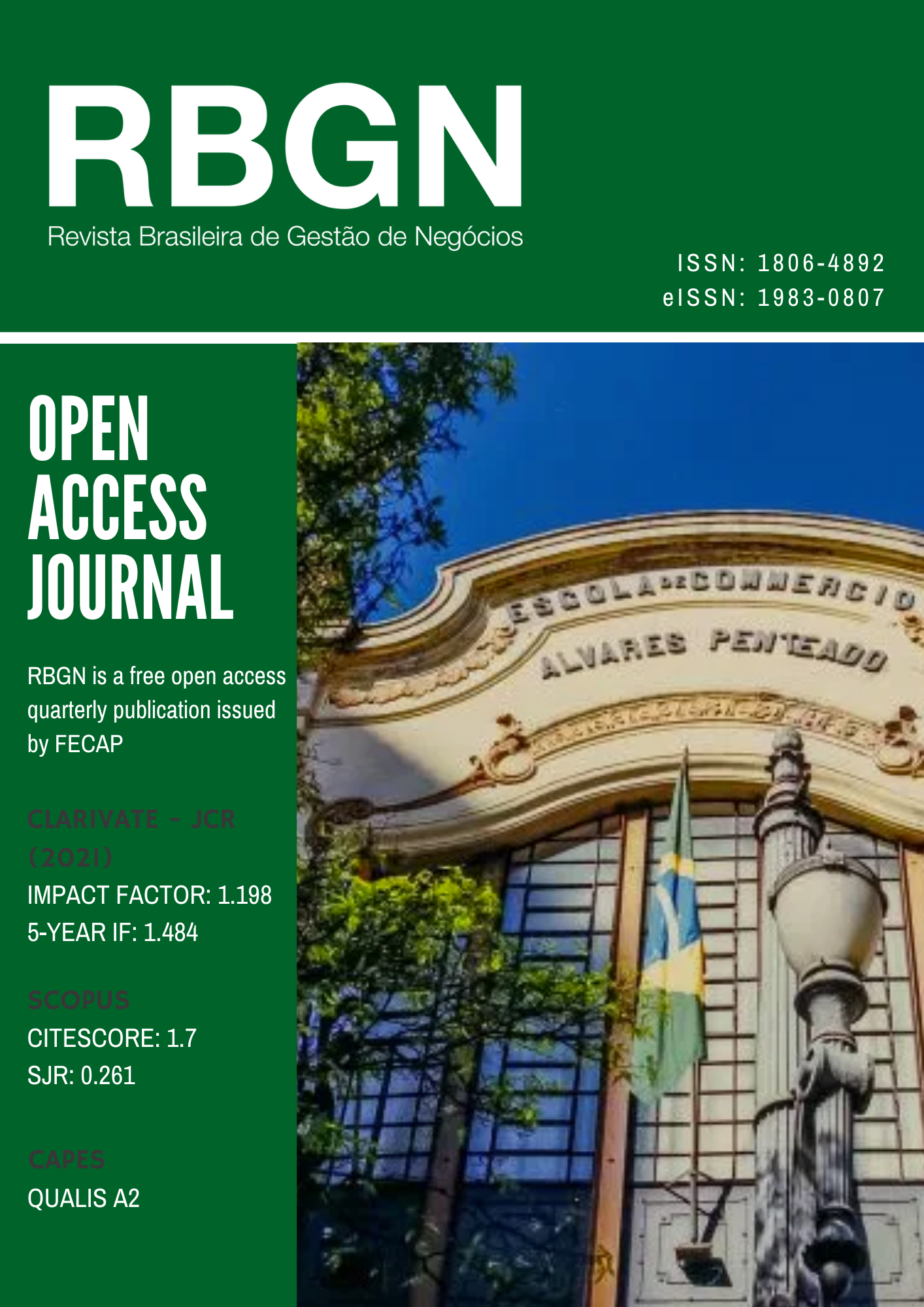Abstract
Purpose – We propose and analyze a new operating model for an energy futures exchange that could be implemented in Brazil, where there is low liquidity for these contracts. The clearing house temporarily assumes the position of customers who fail to answer the margin call, instead of closing the position, as would normally be done under normal conditions.
Theoretical framework – The main theoretical bases were diffusion processes, with jumps and without jumps, and the pricing model developed by Merton (1976).
Design/methodology/approach – We developed a Monte Carlo simulation model, using diffusion processes, with and without jumps.
Findings – The results show that the proposed model and the insurance option generate relatively low-cost increments for the operation that could be easily absorbed by the clearing house.
Practical & social implications of research – This study will be especially useful for market agents who want to evaluate the implementation of a Brazilian energy exchange, which to date is not available.
Originality/value – The article proposes a new operating model for the Brazilian energy futures market and its results may encourage investment in the sector, which lacks an energy futures exchange.
Keywords: Electricity, futures markets, Monte Carlo simulation, clearing house.
References
ABADIE, L. M., & CHAMORRO, J. M. (2009). Monte Carlo valuation of natural gas investments. Review of Financial Economics, 18(1), 10-22. http://dx.doi.org/10.1016/j.rfe.2008.10.002.
Agência Nacional de Energia Elétrica – ANEEL. (2020). Nota Técnica n° 89/2014-SRE/ANEEL. http://www2.aneel.gov.br/aplicacoes/audiencia/arquivo/2014/002/resultado/wacc_geracao_3_-_fechamento_ap_-_v5.pdf
ARGENTO, P. F. (2020). Um modelo de risco para computar a volatilidade e a necessidade de margens de garantia em contratos futuros de energia no Brasil [Master’s thesis]. PUC-Rio. Balcão Brasileiro de Comercialização de Energia – BBCE. (2020). Janeiro com viés de retomada tem aumento de 112% nas negociações. BBCE. https://www.bbce.com.br/bbce-janeiro-com-vies-de-retomada-tem-aumentode-112-nas-negociacoes
BENTH, F. E., CARTEA, Á., & KIESEL, R. (2008). Pricing forward contracts in power markets by the certainty
equivalence principle: Explaining the sign of the market risk premium. Journal of Banking & Finance, 32(10), 2006-2021. http://dx.doi.org/10.1016/j.jbankfin.2007.12.022.
BLACK, F., & SCHOLES, M. (1973). The pricing of options and corporate liabilities. Journal of Political Economy, 81(3), 637-654. http://dx.doi.org/10.1086/260062.
BLISS, R. R., & STEIGERWALD, R. S. (2006). Derivatives clearing and settlement: A comparison of central counterparties and alternative structures. Economic Perspectives, 30(4), 22-29.
BOTTERUD, A., KRISTIANSEN, T., & ILIC, M. D. (2010). The relationship between spot and futures prices in the Nord Pool electricity market. Energy Economics, 32(5), 967-978. http://dx.doi.org/10.1016/j.eneco.2009.11.009.
Câmara de Comercialização de Energia Elétrica – CCEE. (2020). Metodologia. CCEE. https://www.ccee.org.br/web/guest/precos/conceitos-precos
CONT, R., & KOKHOLM, T. (2014). Central clearing of OTC derivatives: Bilateral vs multilateral netting. Statistics & Risk Modeling, 31(1), 3-22. http://dx.doi.org/10.1515/strm-2013-1161.
CORTAZAR, G., & SCHWARTZ, E. S. (1998). Monte Carlo evaluation model of an undeveloped oil field. Journal of Energy Finance & Development, 3(1), 73-84. http://dx.doi.org/10.1016/S1085-7443(99)80069-6.
COSTA, L. N. (2018). O comportamento do mercado a termo de energia elétrica no Brasil [Master’s thesis]. PUCRio. https://doi.org/10.17771/PUCRio.acad.35002
FAMA, E. F., & FRENCH, K. R. (1987). Commodity futures prices: Some evidence on forecast power, premiums, and the theory of storage. The Journal of Business, 60(1), 55-73. http://dx.doi.org/10.1086/296385.
IRWIN, S. H., ZULAUF, C. R., & JACKSON, T. E. (1996). Monte Carlo analysis of mean reversion in commodity futures prices. American Journal of Agricultural Economics, 78(2), 387-399. http://dx.doi.org/10.2307/1243711.
KALDOR, N. (1939). Speculation and economic stability. The Review of Economic Studies, 7(1), 1-27. http://dx.doi.org/10.2307/2967593.
LEE, J. W., & ZHANG, Y. (2009). Evidence on normal backwardation and forecasting theory in futures markets. Journal of Derivatives & Hedge Funds, 15(2), 158-170. http://dx.doi.org/10.1057/jdhf.2009.6.
LUCIA, J. J., & SCHWARTZ, E. S. (2002). Electricity prices and power derivatives: Evidence from the Nordic
Power Exchange. Review of Derivatives Research, 5(1), 5-50. http://dx.doi.org/10.1023/A:1013846631785.
LUZ, C. P. M. S., GOMES, L. L., & BRANDÃO, L. E. T. ((2012). Análise da dinâmica do mercado a termo de energia elétrica no Brasil. Revista Brasileira de Gestão de Negócios, 14(44), 314-334. http://dx.doi.org/10.7819/rbgn.v14i44.1207.
MERTON, R. C. (1976). Option pricing when underlying stock returns are discontinuous. Journal of Financial Economics, 3(1), 125-144. http://dx.doi.org/10.1016/0304-405X(76)90022-2.
NOSAL, E. (2010). Clearing over-the-counter derivatives. Economic Perspectives, 35(4), 137-146.
PELAJO, J. C., BRANDÃO, L. E. T., GOMES, L. L.,
& KLOTZLE, M. C. (2019). Wind farm generation forecast and optimal maintenance schedule model. Wind
Energy (Chichester, England), 22(12), 1872-1890. http://dx.doi.org/10.1002/we.2405.
PIRRONG, C. (2009). The economics of clearing in derivatives markets: Netting, asymmetric information, and the sharing of default risks through a central counterparty. University of Houston.
SOUZA, W., CAMPANI, C. H., BOHL, M., PALAZZI, R., & DE OLIVEIRA, F. (2021). Framework to structure the Brazilian electricity futures market. International Journal of Energy Sector Management, 15(5), 914-932. http://dx.doi.org/10.1108/IJESM-04-2019-0011.
YAN, S. (2011). Jump risk, stock returns, and slope of implied volatility smile. Journal of Financial Economics, 99(1), 216-233. http://dx.doi.org/10.1016/j.jfineco.2010.08.011.
If a paper is approved for publication, its copyright has to be transferred by the author(s) to the Review of Business Management – RBGN.
Accordingly, authors are REQUIRED to send RBGN a duly completed and signed Copyright Transfer Form. Please refer to the following template: [Copyright Transfer]
The conditions set out by the Copyright Transfer Form state that the Review of Business Management – RBGN owns, free of charge and permanently, the copyright of the papers it publishes. Although the authors are required to sign the Copyright Transfer Form, RBGN allows authors to hold and use their own copyright without restrictions.
The texts published by RBGN are the sole responsibility of their authors.
The review has adopted the CC-BY Creative Commons Attribution 4.0 allowing redistribution and reuse of papers on condition that the authorship is properly credited.


